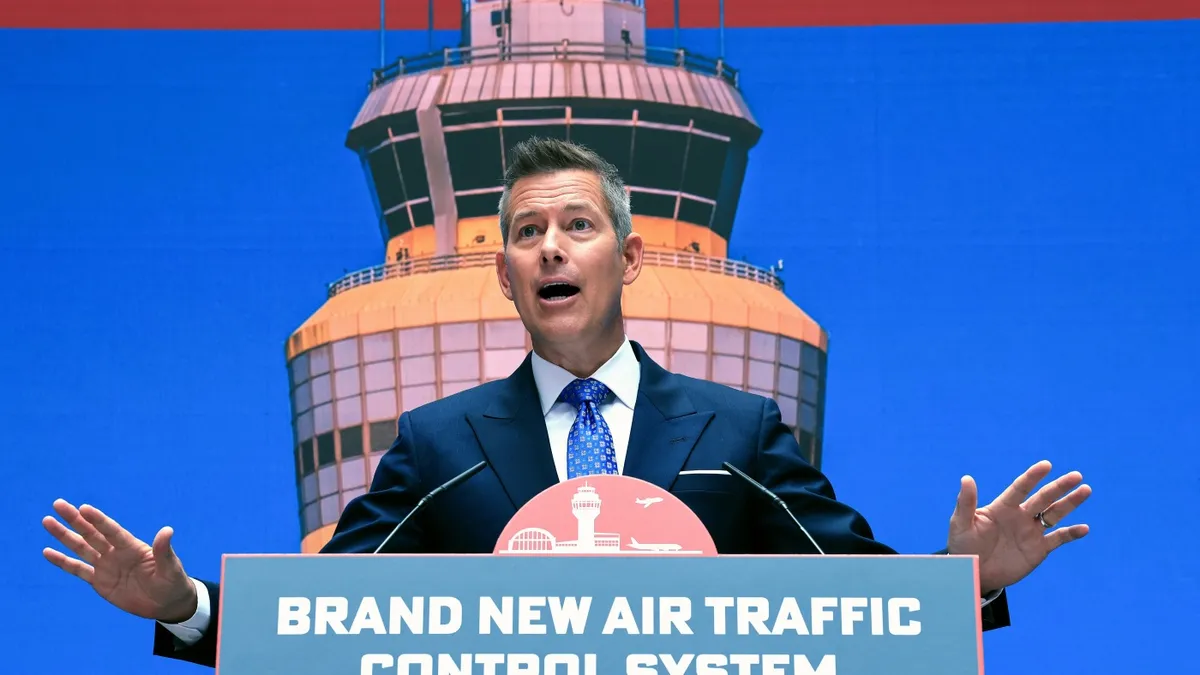
Transportation Secretary Sean Duffy has announced a bold initiative aimed at the full modernization of the nation's outdated air traffic control system within a span of four years. During a press event on Thursday, he revealed a comprehensive, multibillion-dollar plan designed to overhaul the technology employed by thousands of controllers who are responsible for managing the flow of air traffic in and out of airports across the country.
Duffy, along with other officials from the Trump administration, introduced this ambitious modernization plan following a series of chaotic incidents at Newark Liberty International Airport, one of the busiest airports in the U.S. He emphasized the urgency of the situation, stating, "A lot of people have said: This problem is too complicated, too expensive, too hard." Duffy expressed gratitude for having a president who is committed to building and improving infrastructure, asserting that President Trump does not wish to pass this issue onto future administrations or their successors.
While the exact cost of the modernization project remains uncertain, Duffy hinted that it would exceed the House Transportation and Infrastructure Committee's recent estimate of $12.5 billion. In fact, the Modern Skies Coalition, a group comprised of aviation experts and pilot associations, has suggested that an additional $18.5 billion in emergency funding is necessary over the next three years, on top of the existing budget allocated to the Federal Aviation Administration (FAA).
The proposed plan entails a significant upgrade of the existing air traffic control systems that currently rely on outdated technologies, including copper wires and floppy disks. The modernization initiative aims to implement new ground radar sensors at airports, develop an advanced flight management system, and construct new air traffic control towers and facilities. Duffy has stressed the importance of obtaining upfront funding from Congress to ensure the project can be completed within the proposed four-year timeline.
The modernization plan has garnered widespread support from airline executives and trade representatives, who attended the unveiling event. Nicholas Calio, president and CEO of Airlines for America, emphasized the critical need for immediate action, stating, "We can't kick the can down the road. We need to do it now." This call to action comes in response to years of escalating issues within the aviation sector, including a troubling series of incidents in 2023.
In January, a midair collision between an Army Black Hawk helicopter and a commercial airliner near Ronald Reagan Washington National Airport resulted in the deadliest aviation accident in the U.S. since 2001. Following this, a string of close calls and technology failures, particularly at Newark Airport, underscored the urgent need for modernization. National Transportation Safety Board Chairwoman Jennifer Homendy voiced her support for the plan, warning that "an aging system poses an untenable risk to safety."
The chaos at Newark Airport has been exacerbated by several factors, including bad weather, a lengthy renovation of a major runway, and a shortage of air traffic controllers. On April 28, controllers at the Philadelphia Terminal Radar Approach Control facility experienced a complete loss of radar and communication capabilities, leaving them unable to communicate with pilots for an alarming 30 seconds. In response to these challenges, the FAA recently announced several improvements, including the introduction of high-bandwidth telecommunications connections to enhance communication.
While the FAA has initiated a recruitment and retention incentive program to address staffing shortages among air traffic controllers, Duffy's new proposal does not encompass these staffing issues. The Trump administration has also directed criticism at the previous administration, blaming former President Joe Biden and former Transportation Secretary Pete Buttigieg for the ongoing challenges facing the air traffic control system.
The problems plaguing the U.S. air traffic control system are not new. Calls for government action have persisted for decades, with industry stakeholders urging for greater investment in modernization. Under the Biden administration, Buttigieg advocated for increased funding to hire thousands of new controllers, but this effort was met with resistance from House Republicans. A recent Government Accountability Office report indicated that over a third of the FAA's systems are unsustainable due to outdated technology, a lack of spare parts, and other issues.
As Robert W. Mann Jr., an aviation industry analyst, pointed out, skepticism remains regarding the feasibility of implementing an effective air traffic control system. He noted that the recurring theme of requesting more funding for modernization has persisted for over three decades, often yielding the same disappointing results. As discussions continue, the urgent need for a reliable and modern air traffic control system remains a pressing concern for the aviation industry and the flying public alike.